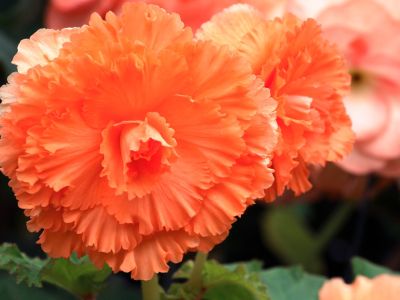Tips for Growing Begonia Plants from Corms
Begonia care begins with proper planting. As many people grow them as annuals, some may not be as familiar with begonia corms; therefore, it may be helpful to share some tips for growing begonia plants from corms. First, always plant begonia corms concave side up (depression on top) either slightly above or level with the compost/soil surface. Gently push the corms into place and once planted, water thoroughly. Make sure, however, that water does not sit in the depression of the corms, as this could lead to rotting. Place the tray in a warm windowsill or heated propagator. Growing begonias from corms requires warm temperatures, usually between 70 and 75 degrees F. (21-24 C.). Using a plastic cover is also acceptable as long as adequate ventilation is provided during begonia care.
Caring for Begonias
Taking care of begonias once the corms have sprouted is easy. When weather permits, begonias can be transplanted to the garden bed, spacing about 10 to 18 inches (25-46 cm.) apart. Likewise, they can be placed in containers spaced approximately 3 to 4 inches (8-10 cm.) apart. Leave plenty of room between plants for adequate circulation to prevent the possibility of developing mildew. When taking care of begonias, be sure to provide begonias with well-drained, organic soil and place them in a sunny or lightly shaded area. While begonias enjoy regular watering, be careful not to let them continually remain saturated, as this can also lead to problems with mildew as well as with fungus. Reduce watering once the leaves yellow in fall. In cold climates, begonia corms need to be lifted and stored in a cool, dry area over winter, usually in mid-October.
Additional Begonia Care
During the growing season, begonias may need to be protected from pests such as snails and slugs. These pests enjoy eating the young shoots and foliage. Caterpillars, thrips, aphids, and mealybugs can also attack begonia plants; however, with routine care, pests rarely become a problem. Tuberous begonias can be propagated easily through cuttings in spring or division. Divide begonias while dormant or when the shoots are still small. To prevent fungal diseases, dust them with Sulphur powder and allow them to dry before planting. Caring for begonias is well worth the limited effort required, as they do most of the work, providing endless color and beauty in the garden. Now that you have some tips for growing begonia plants from corms, caring for begonias grown from corms will be a snap.
